Pots and Pans : The story from mud to pot
- Shataakshi

- May 8, 2018
- 2 min read
Updated: Apr 28, 2019
From the lanes of Kumbharwada, in pictures, a depiction of change from the perspective of form and creation. How and where it begins, the pots and its potter.


As one enters the potter’s lane in Mumbai, they are bound to notice the small huts with dark smoke coming out of it and different kinds of pots getting ready for the market. There are many different entry points to these very narrow lanes of the potter’s colony, and whichever lane you take you can notice the dark walls inside most houses caused by the smoke of cooking these pots. I stumbled upon one such potter’s house and Mr. Harish was more than happy to take me through the process of making a pot, from mud to the final product.
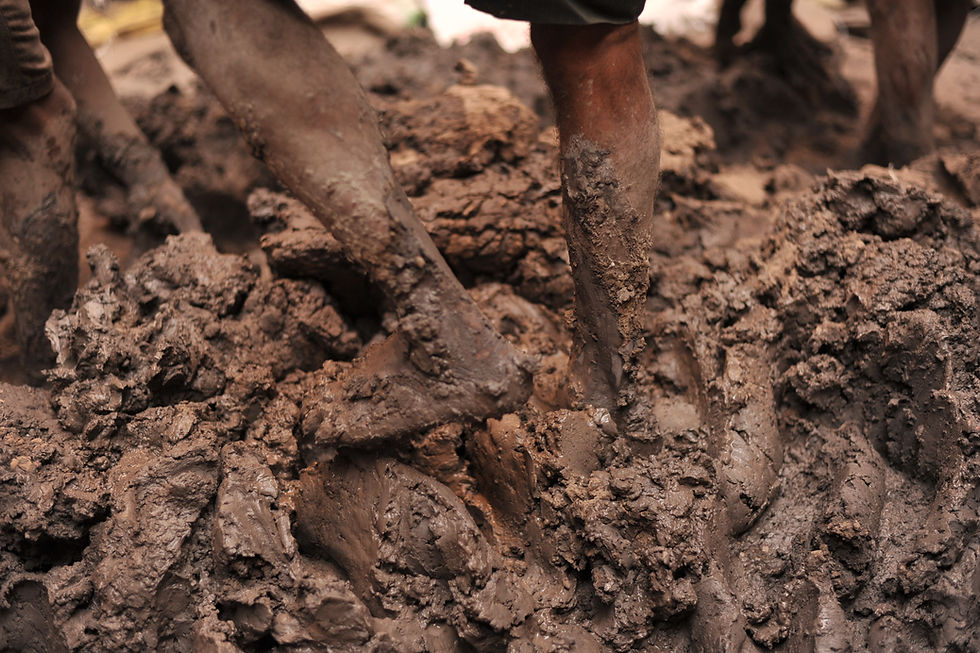
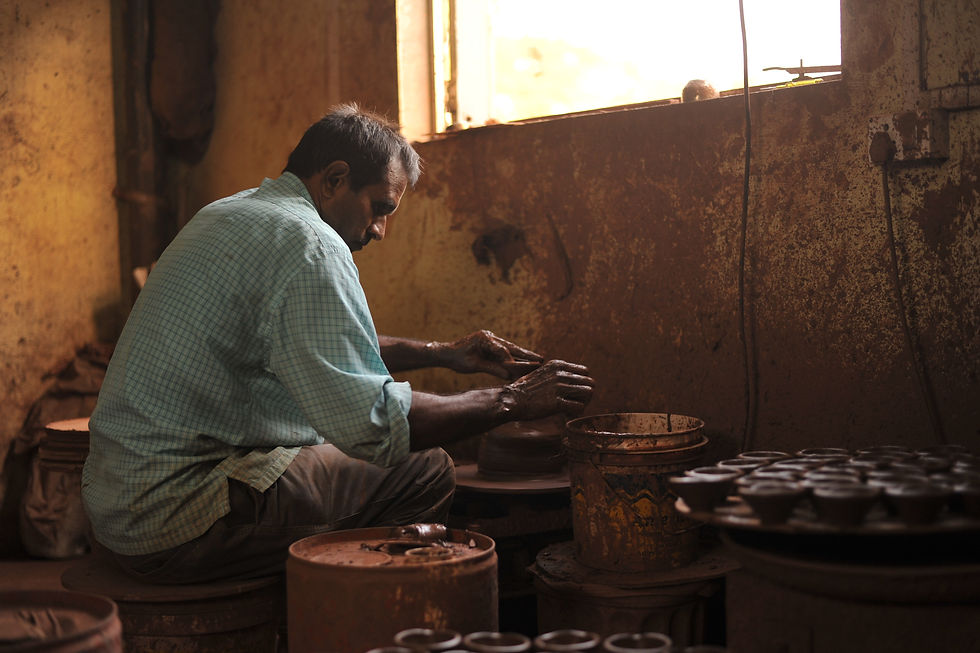
Harish owns his own workshop in Kumbharwada which is right next to his home. Every morning most of the potters start by kneading the mud (clay) that will eventually be formed into pots with their feet. It is a tiring process for the mud is dense and tends to get dried faster and latch itself to the potter’s legs making it difficult to scrap it off later. After a successfully moisture led mud is kneaded, the potter takes it to the wheel where they give the shape that is desired to the clay formed with mud and once enough pots have been formed they take it to the kiln to burn it at high temperatures to give it a permanent shape.
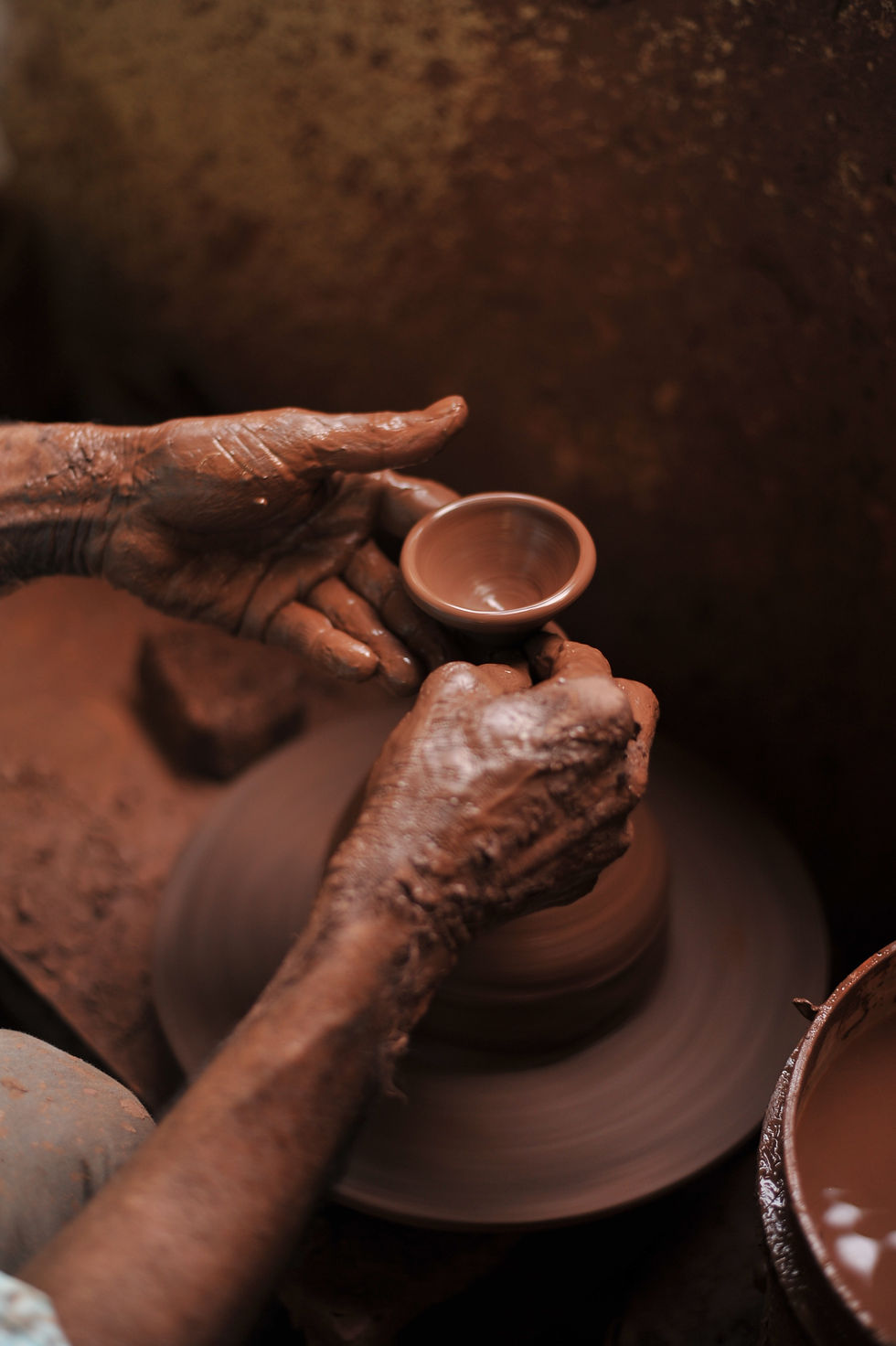

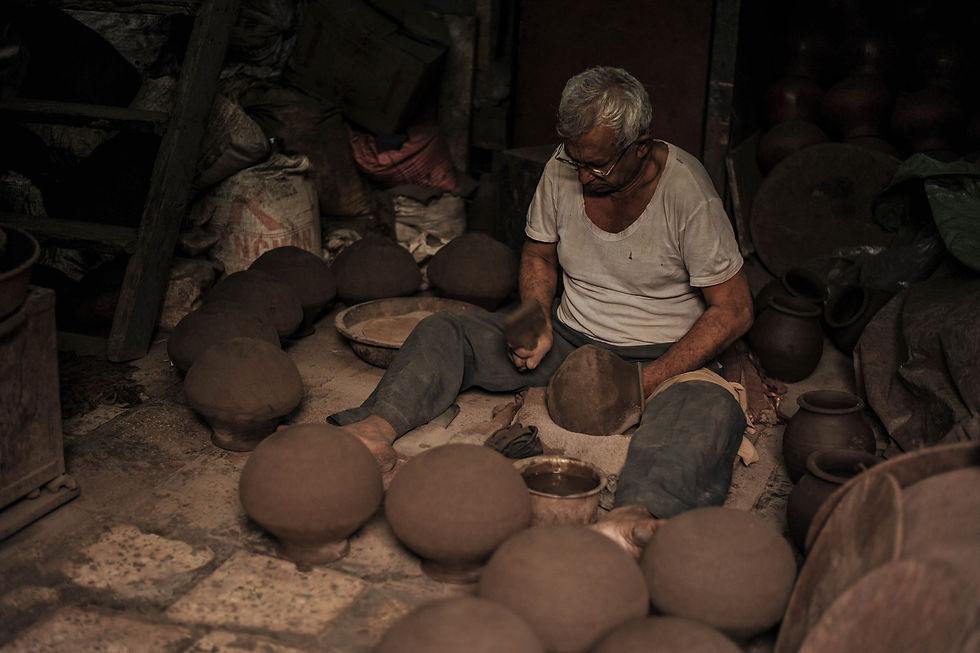
Once the pots have been cooked in the kilns or in furnaces and have the concrete shapes, the potters use traditional method of beating to fill the whole on the bottom of the pots that is left once the pot is taken away from the wheel. This technique is much more known in the southern India where the potters leave a hole in the bottom of the pot when they take the pot off the wheel while giving it a shape. The process of beating then is carried out by a potter in a certain position, by keeping the pot on his left thigh and from a certain distance to his shoulder and beaten from all sides so that the clay would expand and fill the hole.





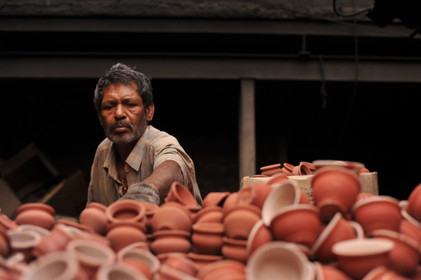









Comments